On January 27th, Innovation in Barcelona (Part 1) appeared on Barcinno. This article is a follow up and is based on interviews with Joan Marti Estevez (Acc1o), Jorge Juan Fernandez (Biocat & Hospital Sant Joan de Déu), Sonia Mulero & Guillermo Marqueta-Siibert (Fundacion INLEA), Chelo Fernández (Barcelona City Council), Jesus Purroy (Parc Científic Barcelona), Marc Ramis (Tech & Business Innovation), Joan Cortes (Lead To Change), Miquel Barceló (Innopro Consulting) and Nigel Ten Fleming (Adventura Capital) and many more brief encounters. It shows lessons learned, reflections, announcements and an overview on the current state of innovation in Barcelona.
Yes We Can….Or Not?
At the end of February, it was announced that Barcelona was selected as one of three finalists for the European Capital of Innovation award (iCapital). We were nominated because of the introduction of new technologies that bring the city closer to its citizens. During the Innovation Convention in Brussels on March 11th the official winner will be announced, but how is this innovation spirit reflected in real life by the change makers, influences and innovation practitioners in Barcelona?
Overall, everyone loves “innovation” in Barcelona. Nigel Ten Fleming never saw so many business cards featuring innovation officer, planner, adviser, developer … than he has in Barcelona. To achieve excellence in innovation, the right spirit is needed. Sonia Mulero is convinced that Barcelona has this spirit. For the Olympics of 1992, the city proved that it can transform. This means the capacities are present to transform the city into an international Innovation Hub. However, to be an international innovation hub, Nigel reflects that one should also internationalize oneself. “A lot of Catalans have never worked outside of Catalonia; this leads to a shortage of adventures exploring curiosity. This inside perspective is also reflected in the websites, which are mostly in Catalan and not in English. How can the world know that they exist?” However, within the international sphere you see a small core group of Catalans that are immensely charismatic and visionary. They are the sponsors and heroes of what is happening in innovation within Barcelona.
But only the spirit is not enough. Attracting the right people with the right (risk) mindset and skills is equally important. Barcelona needs above mentioned role models, which have now either moved abroad or are working disguised. Creating the mindset begins with education: schools should stimulate curiosity thinking and let children experience different aspects of entrepreneurship. The role models could share their stories and experiences in order that children will start saying: ‘I would like to achieve what Didac Lee or Xavier Verdaguer has achieved.’ Instead of having Messi and Shakira as a role model.
Another issue related to mindset is what Nigel calls the local modesty and little by little approach. “In Barcelona people are over modest. Ambition is viewed negatively, as a type of greed. “As a VC, Nigel often finishes his questions with “How big do you want to be”. And if someone is just answering on a local playing field instead over conquering the world, it is a disappointment. You need horse power to make a change. To imagine the scale one should think of at least: 1 SME needs 1million.
No words have to be dedicated to marketing. The strong brand of Barcelona is already in place. But also the science parks are strong. The company incubator PCB was one of the first university-science parks in the world. Nowadays it is still seen as an example of research infrastructures within an innovation ecosystem. Jesus Purroy, the technical director, has brought visitors over from Ecuador, Taiwan and Finland to learn from the Barcelona example.
Another important factor is critical mass. In order to become a real innovation valley, density of skills is needed. The question is whether Barcelona has a high enough density of (technical) talent and supporting networks. Although we don’t want to be the next Silicon Valley, it is the most widely known reference point. Hence, have a look at the Silicon Valley funnel from Chris Gill, President of Silicon Valley Association of Start-up Entrepreneurs:
400.000 engineers
200.000 wantrepreneurs
6.000 entrepreneurs
600 businesses
300 remain in business after 2 years
150 manage to get 4X the initial investment value
Only 60 reach 50X their initial investment in value in a time span of 7 years.
The potential is the breakdown according to the amount of (business) engineers. Following the same path, Barcelona would end with more or less 10 ventures that reach that value. That’s not a valley.
The Culture Of Risk Averseness
“What risk do you want to take?” This question is rooted in cultural heritage and background. In Barcelona people are searching for personal and family security instead of living with own created risk. These cultural insights are well described by scientists like Geert Hofstede and Max Weber. ‘
“We are a country of SME’s, but we need some huge champions”, is the urge Nigel is feeling. In the Forbes 500 only 1 company was from Barcelona: Gas Naturel Fenosa. To achieve the huge champions, risk taking is inevitable. The risk averseness, lack of a mentality of let’s do it, is hindering this kind of growth. Furthermore, when you fall, you fall hard. Failure is associated with shame and loss. A curriculum vitae with ‘a hole’ is perceived very bad. Therefore, people are afraid to make the jump, take the risk.
The structures of how to survive as a startup in the bureaucratic landscape are not well defined. You have to invent your own way, no checklist of places to go to and people to see.
Joan Cortes believes that there is a bit of a myth about risk culture in Silicon Valley: failing is only being ‘awarded’ as a good lesson when people eventually succeed. Those are the ones you hear screaming ‘the phoenix arising from the ashes’, those that didn’t succeed disappear from the horizon and are left on the street without hope. The real difference is in how one is handling the failure of a startup: learning versus not learning from mistakes.
Where To Search For The Next Disruptive Thing?
Miquel Barcelo sees a big focus on engineering and technology and then most aimed at bio-engineering, life science, (sustainable) energy and (mobile) telecommunication. That Barcelona is getting a stance in this field is also reflected by the presence of two world renowned conferences like Mobile World Congress and the Smart City Expo.
With regards to health and life sciences, the innovations occur in: provisions, ‘intelligent’ pharma, medical devices (screening/ robotics) and digital health through app services. Barcelona has a strong Biotech sector, which is translated in excellent research and a boom of creating companies in this area. Jesus Purroy speaks about two generations in the Biotech sector; those from before the crisis and after, but overall the amount started to grow after 2005. In the beginning a lot of companies were publically supported, without having a real business model and those companies were too much depending on public money. That changed and the second generation has a bootstrapping way of building customers and enhancing the business model, which gives them a solid base but perhaps a slower step by step approach. But in majority it is a very young sector. The breakthrough must be expected in years, not in months yet.
BioCat, a public-private partnership with the goal to enhance life-science ecosystems as engine for economic growth in Catalonia, nurtures one of the largest clusters in town and some say most promising. They reach 20 science and technology parks, 440 research groups, 10 universities, 54 research institutes and 15 hospitals that together form the life science hub of Southern Europa (Biocat Directory, March 2013). BioCat is investing in talent development, because the sector is in need of specific entrepreneurial and knowledge searching skills. A long term program in this is MOEBIO: an 8 month program to identify critical needs in health (care) or as Jorge Juan Fernandez calls it “the last black box of the economy.” Basically, it is an example of valorization to get from the ideas in the hospital to market. In this process prototyping and customers/consumer feedback is very important. There are different types of prototyping: 1) sketching, 2) soft prototyping (e.g. 3D) printing and 3) hardware prototyping: making a workable testing concept. Currently, there is also an accelerator launched focused on digital health and medical devices: Sambaccel.
The Knowledge Economy
We live in the Knowledge economy. But why is the Knowledge Transfer Hurdle so high? Or in other words, why is valorization so difficult?
Barcelona has strong universities with well received scientific output and a supportive parallel knowledge institute system (CERCA) that generates patents and spin offs. In Catalonia 1% of the world science is generated, which is a fairly high percentage. Marc Ramis emphasizes that the academics in Spain are really good, with a high ratio of publication in journals as Nature and Science. He adds that there is a good pool of potential with creativity, open minded view and a balanced work-private ratio. Barcelona has some of the brightest scientists who are able to be curious and invent marvelous stuff because of granted (European) funding programs. However, this large percentage is poorly reflected in business opportunities. Currently, if you think about research, you don’t think about Barcelona and that is a shame, because with good knowledge transfer research can be the basis for innovative growth.
After a few interviews, it became apparent that one of the biggest challenges for Barcelona to leap into the innovation top is to improve the knowledge valorization by connecting science with business. Joan Marti recently visited Israel and acknowledges that there is still a lot to learn with regards to technology transfer. “Israel is way better in selling the knowledge they have and put it into business.”
That knowledge sharing is important, is widely shared. The strategy to achieve so differs. It is becoming more and more a collaborative effort to mix theory with practice. Society is moving towards an (educational) approach in which different perspectives are combined through people from different backgrounds. The multifunctional ‘teams’ aim at solving a clear need: whether it is clean energy, health dealing with elderly diseases or the challenge of obsolete jobs due to robotics. Think beyond appeal: create services that go with the product. The future is in combination offerings. For this reason, ACc1o’s cluster policy is more and more trans-sectorial. For example, the Kids cluster combines apparel, food, toys and many more sectors.
The multifunctional approach as a means for knowledge sharing is also supported by KIC Innoenergy and Biocat. They pick the best tutors from universities, government, consultancy and industry to facilitate knowledge sharing, storytelling and inspiration. In other words, a X-thinking approach to facilitate and accelerate entrepreneurship by combining science, business and various thinking tools (design, integrative, strategic, creative and system).
In order to make it successful, Jesus Purroy stresses that outreach activities are of utmost importance. Research and communication go hand in hand. From the beginning you should also take into account popular science to spread your message. Catalan science had excellent result and a large scientific output, but it is not always relevant.
Eyes are set on Andreu Mas-Colell, the Catalan Finance minister. Experts expect that he might be able to evoke the knowledge base revolution in Barcelona.
Conclusion: Innovation in Barcelona
The main outcome is: we are not there yet. Most experts have marginalia that should first be covered for Barcelona to really become that promising innovation hot- and sweet spot. It currently depends on too many aspects that should be improved to really live up to the potential. Work is being done is this field, but it won’t be a matter of months; the transition will take some years.
It is good to see that so many initiatives are taken. All are good intentions but at the same time everybody is following its own path and is pushing forward its own bandwagon. There is no horizontal or bottom up coordination. No clear shared vision. The initiatives are active on a small scale and although behind the scene they are very well connected, on the forefront they all have their own ambitions with small deviations and organize separate events. Meaning that the impact to change, for which all are hungry, is scattered.
In general, Barcelona does not need new initiatives, more pieces. Barcelona has a diversified economy; it needs better connections and a stronger grip on talent. There is a need for a common strategy, where English and Education should be two important pillars. I do hope that we won’t be stuck in talking, writing about the city of miracles and possibilities, but that the actions will be aligned. We have a lot of sparks, but the Olympic fire isn’t burning yet. Real breakthrough innovations from Barcelona are few. A lot is copying great concepts, translating them to local needs or creating interesting (incremental) services. Sonia Mulero remarked: “The status quo is hardly disrupted and sadly the real innovators are still moving out.”
Another need is fostering entrepreneurship. Currently, a good working mentoring ecosystem is lacking. Support tools are needed, but mostly people that proved it worked. Some famous Catalans should return home and share their experience, help mature the local ecosystem. Many respondents came to the following observation: Barcelona does not have enough own gurus. Nigel Ten Fleming added another need, the Nordic light to show the road: “Barcelona needs 1 company that can make it over the €500M to make the world come flooding over Barcelona.”
Barcelona is catching up by learning from the big mistakes made in the US. But Nigel Ten Fleming also gives a warning. Europe, in general, should take the momentum quick. Asia is searching for innovation potential and is starting to recruit talent. “Asian countries would die for ¼ of the innovation that is going on in this city.” The same counts for the Middle East. The Flat world is in favor of entrepreneurs. “Entrepreneurship will be the next “oil” goldmine for the Middle East to support their transition and new economy”. Barcelona has this powerful ‘innovation’ asset and if used wisely it can be exported to countries that can’t innovate.
It became clear that the way to go for Barcelona is the transition from manufacturing to an example in knowledge economy.
Tips & Tricks
During the interviews, all persons gave various trips and tricks for startups and innovators. I listed them in random order without further judgment. Herewith, the important skills to be an innovative entrepreneur:
- There are 3 types of leadership. Leading yourself, leading a team and leading a company. Three different challenges which one must master.
- For success, most important element is the people. A project can change over time, but changing a person is rather hard: the person can make the impact and the change. The capacity to change and be distinctive is key. This notion should already be embedded in education for children.
- Bootstrapping: you have to realize that you can play a bigger game: explode globally. The vision, the global outlook, must be set from the beginning. But do consider bootstrapping as an approach: starting with small customers.
- Find a mentor. There is a good pool of startup companies in BCN, but not enough experience. Mentors, people who have been there before, are needed to share experience from starting a company. This knowledge cannot be substituted for anything else. It is a great asset. Get a mentor involved in your personal development and through this, your company will grow.
- Learn from the USA, where the case study approach to learn and improve is central. The iteration process, needed in any innovation process, is this way far better facilitated.
- Don’t forget about the business part. It’s not all about entrepreneurship. Although entrepreneurship is the ‘sexy idiom’ in current business practice, business and building companies are very important. Currently, there is some kind of obsession of being an entrepreneur, but nobody wants to be a business person. But, especially nowadays, we need big companies and people that want to hire others: who are willing to take a risk to let their companies grow and create new employment.
- In some cases VC’s are a great at backing, but not necessarily the best to achieve innovations that evoke systemic change. Some warn for the short term perspective (18month cycle) of VC’s capital injection and restrain of freedom to really work on long cycle stories that can disrupt the status quo and result in real innovations.
- And to end, a nice quote from Nigel Ten Fleming “Startups are intense pressure cookers and not suited for 95% of people. They tend to bring out both the best and worst in people. Give up the trodden path, and if you survive, you are unlikely ever to go back!”
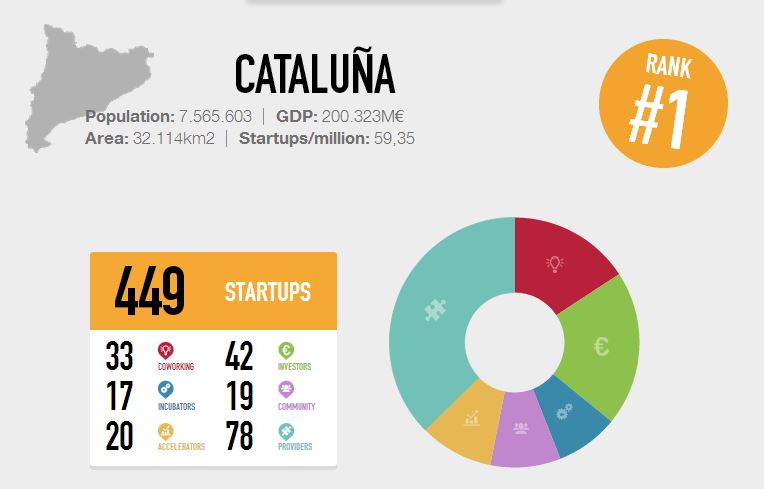
Infographic credits: Infographics from Spain startupmap.com
Image credits: Shutterstock


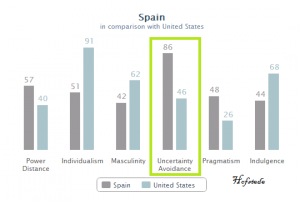
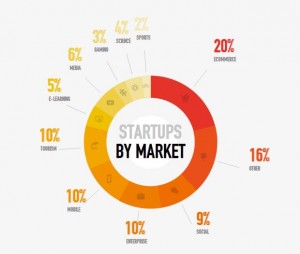
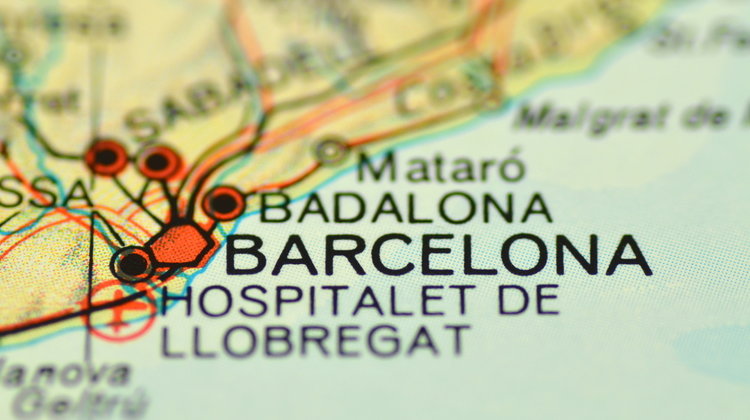


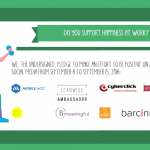

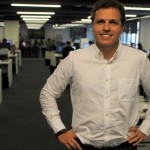
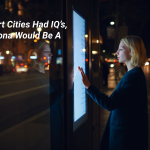
Leave a Reply